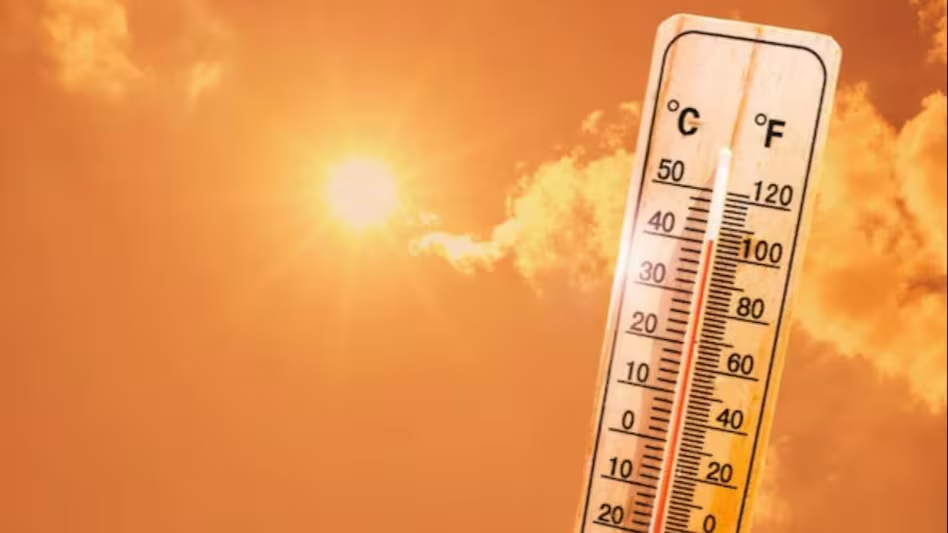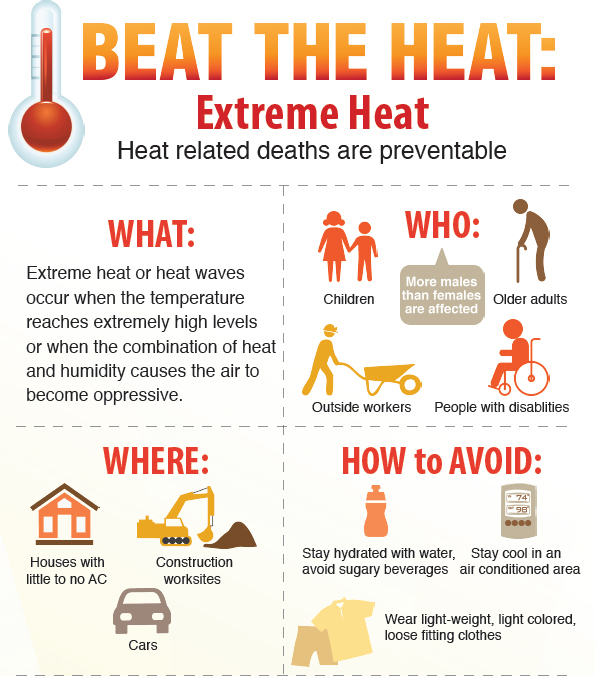Description

Copyright infringement not intended
Picture Courtesy: https://www.businesstoday.in/india/story/summer-is-becoming-hotter-imd-predicts-above-normal-temperatures-longer-heatwaves-in-april-june-423811-2024-04-01
Context: The Indian Meteorological Department (IMD) forecasts a hot summer in India with above-average temperatures, particularly in the southern peninsula, central and east India, and the northwestern plains.
Details
- Heatwaves are a natural phenomenon caused by various factors such as high atmospheric pressure, lack of cloud cover, and urbanisation. They can occur in different parts of the world and vary in intensity and duration depending on the region's climate and geographic features.
- Heatwaves can occur in both urban and rural areas, but urban areas tend to experience higher temperatures due to the urban heat island effect.
- In India, heat waves typically occur between March and June, sometimes extending into July.
How is a Heat Wave Defined?
- The India Meteorological Department (IMD) has specific criteria for declaring a heat wave, based on both the minimum temperature and the difference (departure) from the normal maximum temperature for a location.
- If the normal maximum temperature for a location is 40°C or less:
- A heat wave is declared if the maximum temperature is 5°C to 6°C higher than normal.
- A severe heat wave is declared if the maximum temperature is 7°C or higher than normal.
- If the normal maximum temperature for a location is more than 40°C:
- A heat wave is declared if the maximum temperature is 4°C to 5°C higher than normal.
- A severe heat wave is declared if the maximum temperature is 6°C or higher than normal.
- Regardless of the normal maximum temperature, a heat wave is automatically declared if the maximum temperature reaches 45°C or more.
|
Climate change is causing more frequent and intense heat waves globally. India is experiencing this too, with increasingly severe heat waves each year. These events have devastating consequences for human health, causing a rise in heat-related illnesses and deaths.
|
Challenges associated with heatwaves, including:
- Health Risks: Heatwaves can lead to heat-related illnesses such as heatstroke, and dehydration, placing strain on healthcare systems.
- Infrastructure Strain: High temperatures can overload power grids, leading to blackouts, and cause damage to roads, railways, and other infrastructure.
- Agricultural Impact: Heatwaves can damage crops, reduce yields, and threaten food security, particularly in regions reliant on agriculture.
- Environmental Consequences: Heatwaves can intensify drought conditions, increase the risk of wildfires, and disrupt ecosystems, leading to biodiversity loss.

To address the challenges posed by heatwaves, various steps have been taken, including:
- Heat Health Warning Systems: Implementing early warning systems to alert the public and authorities about heat waves and provide guidance on protective measures.
- Cooling Centers: Establishing cooling centres in communities to provide relief to individuals during extreme heat events, especially for those without access to air conditioning.
- Urban Planning: Including heat-resilient designs and green infrastructure into urban planning to mitigate the urban heat island effect and reduce heat exposure in cities.
- Public Education: Conduct outreach and educational campaigns to raise awareness about the dangers of heat waves and promote heat safety practices.

Way Forward
- Strengthening Resilience: Building resilience at the individual, community, and institutional levels to better withstand the impacts of heat waves.
- Climate Action: Taking ambitious action to mitigate climate change and reduce greenhouse gas emissions to prevent the exacerbation of heat waves in the future.
- Research and Monitoring: Investing in research and monitoring efforts to better understand the drivers of heatwaves and develop effective adaptation measures.
- Collaboration: Fostering collaboration among governments, communities, and stakeholders to develop and implement heatwave preparedness and response plans.
Conclusion
- India faces a challenging summer with above-average temperatures and more frequent heatwaves. The rising heat can have severe effects on public health, agriculture, water resources, energy supplies, and the environment. Through education, safety measures, and climate adaptation, the effects of the heatwave can be lessened.
Must Read Articles:
HEAT WAVES: https://www.iasgyan.in/daily-current-affairs/heat-waves-36#:~:text=What%20is%20a%20Heat%20Wave,temperature%20by%209%20degrees%20Fahrenheit.
Source:
NATIONAL DISASTER MANAGEMENT AUTHORITY
|
PRACTICE QUESTION
Q. Heatwaves primarily impact human health. However, they can also indirectly affect which of the following?
1. Agricultural output
2. Water availability
3. Air quality
4. Energy demand
5. Wildlife habitats
Select the correct code:
A) Only two
B) Only three
C) Only four
D) All five
Answer: D
|











